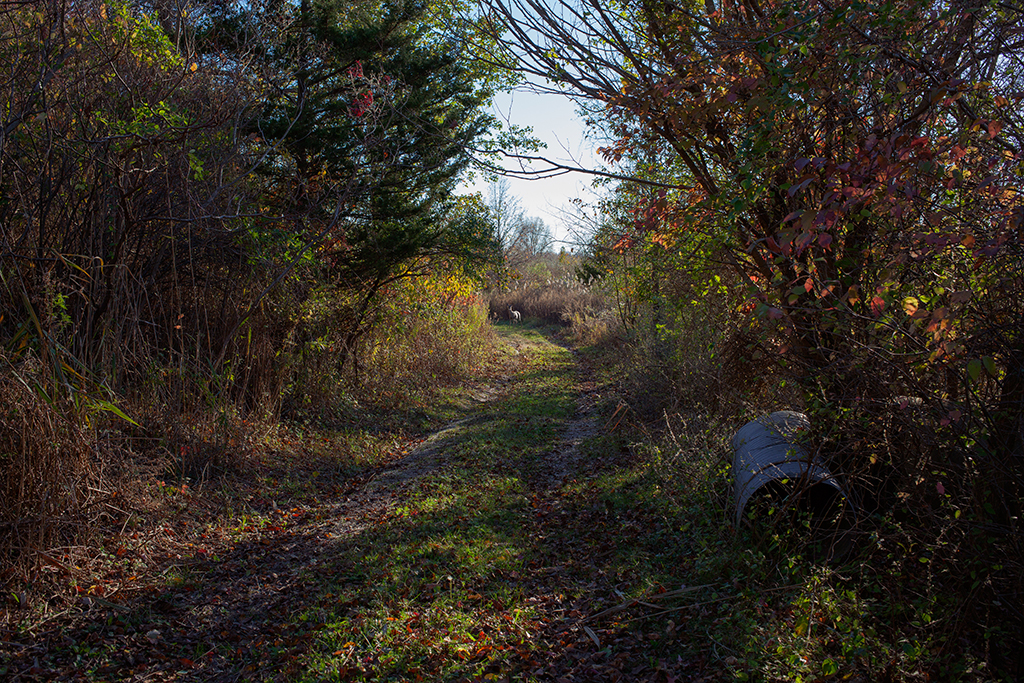Capturing Change
Photographers document the transformation of a Staten Island landfill into parkland. A long term collaboration with NYC Parks and the Freshkills Park Development Team.
We are celebrating 15 years — and counting — of stories that are deeply researched and deeply felt, that build a historical record of what the city has been.
Nine months ago, Urban Omnibus published the first installment of “Capturing Change,” a series of photographs of Staten Island’s Freshkills Park — the largest park to be developed in New York City in more than 100 years. In the series, commissioned and with text by Mariel Villeré, the manager of programs, arts, and grants at Freshkills, a team of local photographers have documented the seasons in Freshkills’ transition from landfill to park. In November, we ran a second “Capturing Change” essay on the West Mound — the park’s highest point.
This winter, Villeré set photographers Will Ellis, Stephen Mallon, Michael McWeeney, Kate Oiseau, and Kipp Wettstein loose in one of New York City’s wildest landscapes. This edition of “Capturing Change,” in memory of the winter that wasn’t, shows what they found in East Park, one of the first sections of Freshkills that will open to the public. –H.G.
The area of Freshkills Park known as East Park is made up of 482 acres of new grasslands, an important resource for Staten Island, New York City, and the region.
The birds that fly over this part of the world during migration have new grasses to touch down on. In summer 2015, on-site researchers spotted the grasshopper sparrow, rarely seen in New York City, nesting in the tufts of grass in East Park. Tours led by researchers Seth Wollney and Dick Veit and the Audubon Society of New York brought flocks of avid birders anxious to catch a glimpse of the sparrows before they flew on. Through its contribution of new land, East Park represents new life.
This is in stark contrast to its previous identity as an active landfill, which was visually blocked by the construction of a berm separating the landfill from Richmond Avenue and the Staten Island Mall. As many Island residents will tell you, “I would run across the parking lot from the car holding my nose” — but now the dump is a sensorial memory, quietly hosting new life even before it opens as a park.
The East Park plateaus at 122 feet above sea level and is encircled by roads suitable for biking and a necklace of ponds along the interior side of the berm, on the site’s eastern edge. Some features here are more prominent than in North and South Parks: the landfill gas wellheads are buried and man-holed, to stay out of the way of future park activities. Four drainage downchutes, stepped like Mayan temples, cascade down the mound, directing rainwater into the ponds along the berm, which are home to water fowl and turtles (painted, snapping, and the invasive red-eared slider).
East Park will open in advance of Freshkills as a whole, and feature a kayak launch and wetland boardwalk that will provide access to expansive interior views and recreational opportunities — and allow the Parks Department to examine patterns of use before investing in major capital facilities. The berm will be blasted through in order to create primary access routes for the park. The Community Hub, a unique berm structure nestled like a hobbit house, will serve as a small welcome center and meeting point, connecting the recently completed New Springville Greenway to the interior trails of East Park for cyclists, runners, and pedestrians.
The phased construction of East Park is representative of the incremental build-out of the entire Freshkills Park site. This part of the landfill was capped in 2011 and the Parks Department plans to implement the Early Access Plan to open it to the public within the next five years, so that community members can join the birds in taking advantage of the new landscape, so much like a National Park in its scale and “forever wild” character. Opportunities for scientific research, unique land art projects, kayaking, trail running, and biking will soon co-exist. In the meantime, photographers have documented what lies inside its gates, a serene prairie not without evidence of human impressions on the landscape.
The views expressed here are those of the authors only and do not reflect the position of The Architectural League of New York.
Photographers document the transformation of a Staten Island landfill into parkland. A long term collaboration with NYC Parks and the Freshkills Park Development Team.

